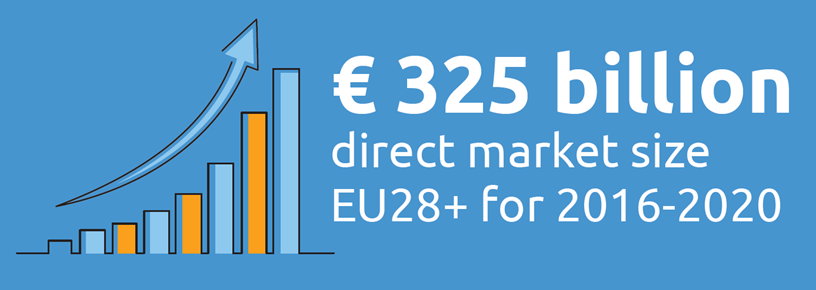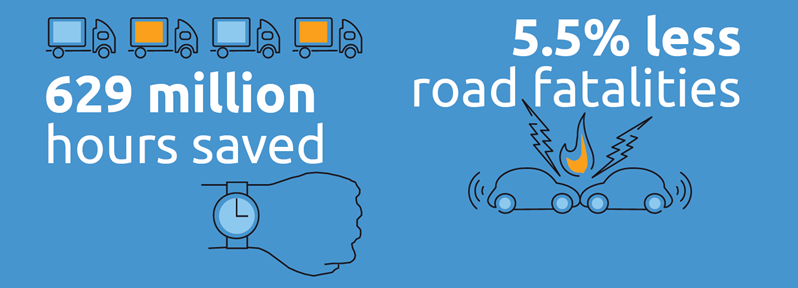Creating Value through Open Data
Economic benefits are primarily derived from the re-use of Open Data. Value is there. The question is how big?
The European Union has adopted legislation to foster the re-use of Open (Government) Data. The expected impact of this legislation combined with the development of data portals, is to drive economic benefits and further transparency. Economic benefits are primarily derived from the re-use of Open Data. Value is there. The question is how big?
The economic benefits have been largely outlined by a number of studies. However, few studies offer aggregate figures covering several different macro-economic indicators.
Thus, the European Commission, within the context of the launch of the European Data Portal, wished to obtain further evidence of the quantitative impact of re-use of Public Data Resources. A study was carried out with the aim to collect, assess and aggregate all economic evidence to forecast the benefits of the re-use of Open Data for all 28 European Member States and the ETFA countries, further referred to as EU 28+, for the period 2016-2020.
Several benefits of the re-use of Open Data are identified. These consist of direct and indirect benefits.
Direct benefits are monetised benefits that are realised in market transactions in the form of revenues and Gross Value Added (GVA), the number of jobs involved in producing a service or product, and cost savings. Indirect economic benefits are i.e. new goods and services, time savings for users of applications using Open Data, knowledge economy growth, increased efficiency in public services and growth of related markets.
The market size of Open Data is defined through the market volume and the market potential.
The market volume exhibits the totality of the realised sales volume of a specific market; the value added. A distinction can be made between the direct market size and the indirect market size. Together they form the total market size for Open Data. For 2016, the direct market size of Open Data is expected to be 55.3 bn EUR for the EU 28+. Between 2016 and 2020, the market size is expected to increase by 36.9%, to a value of 75.7 bn EUR in 2020, including inflation corrections. For the period 2016-2020, the cumulative direct market size is estimated at 325 bn EUR.

Open Data creates new jobs, directly related to the re-use of Open Data.
In 2016, there will be 75,000 Open Data jobs within the EU 28+ private sector. By 2020, this number is forecasted to increase to just under 100,000 Open Data jobs. This represents a 32% growth over a 5-year period. Thus, in the period 2016-2020, almost 25,000 new direct Open Data jobs will be created.

Public administrations seek to further understand the cost savings they can realise thanks to Open Data.
Based on the forecasted EU28+ GDP for 2020, whilst taking into account the countries' respective government expenditure averages, the cost savings per country can be calculated. The accumulated cost savings for the EU28+ in 2020 are forecasted to equal 1.7 bn EUR.
Efficiency is an important factor in all administrations and companies and across all sectors.
The aim of efficiency is to improve resource allocation so that waste is minimized and the outcome value is maximised, given the same amount of resources. Open Data can help in achieving such efficiency, The study offers a combination of the insights around the efficiency gains of Open Data and real-life examples. Three exemplar indicators are assessed in more detail: how Open Data can save lives, how it can be used to save time and how Open Data helps achieve environmental benefits. For example, Open Data has the potential of saving 1,425 lives a year (i.e. 5,5% of the European road fatalities). Furthermore, applying Open Data in traffic can save 629 million hours of unnecessary waiting time on the road in the EU.

In conducting the macroeconomic analysis of the impact of the re-use of Open Data for Europe, several observations are made.
The majority of studies performed previously are ex-ante estimations. These are mostly established on the basis of surveys or indirect research and provide for a wide range of different calculations. No comprehensive and detailed ex-post evaluations of the materialised costs and benefits of Open Data are available. Now that governments have defined Open Data policies, the success of these initiatives should be measured. The study offers several recommendations for doing so.
The report goes into further detail on how Open Data has gained importance in the last several years. Furthermore, the report provides insight into how Open Data can be used, and how this re-use differs around Europe. These insights are used to develop a methodology for measuring the value created by Open Data. The resulting values are presented in a graphical way, providing insight in the potential of Open Data for the EU28+ up to 2020.
To read the complete study:
